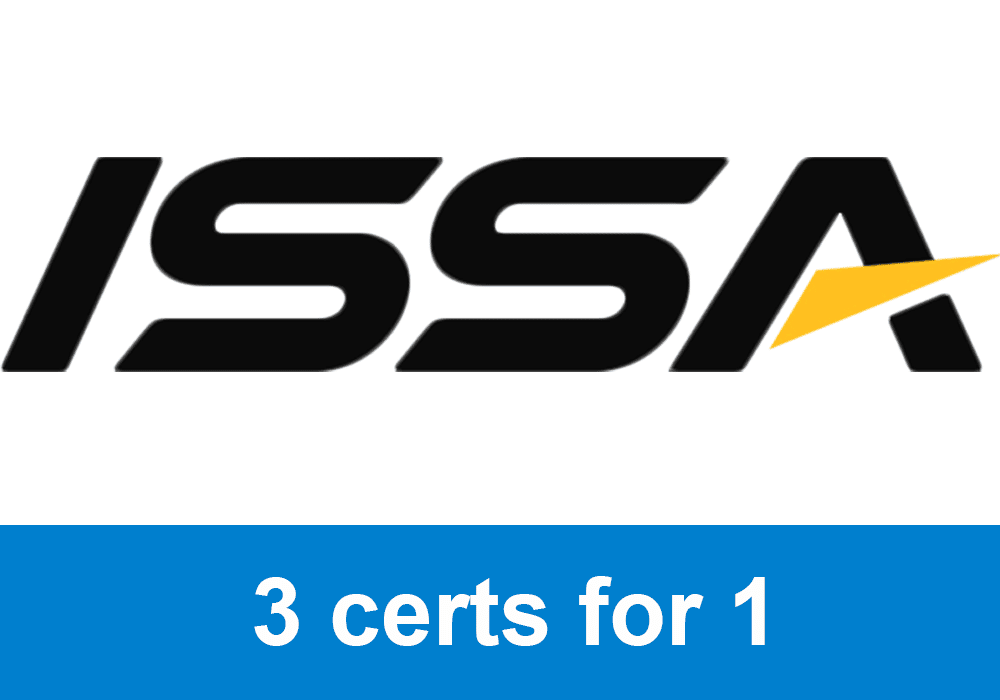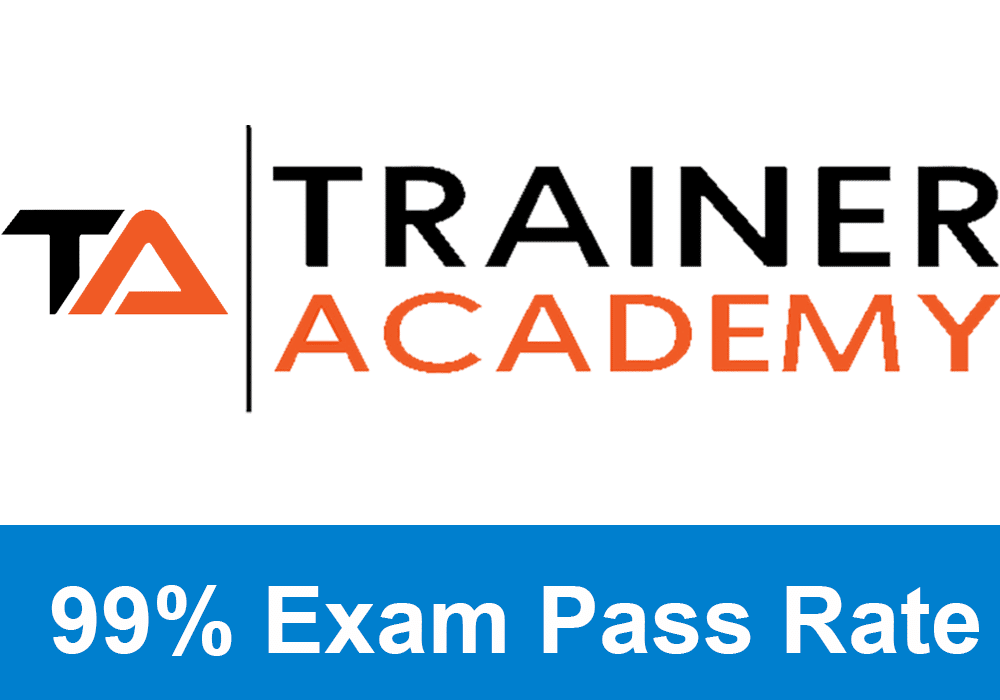
If you have not yet signed up for the NASM CES certification, receive a big discount here.
Get your copy of the NASM CES exam cheat sheet. It helps immensely for studying for the exam.
My PTP students report cutting their NASM CES study time and effort in half with Trainer Academy.
Benefit from the Exam Pass Guarantee and Retake Fee Guarantee. Plus, take advantage of my current discount code PTPJULY for 50% off the MVP Program (Ends July 9th, 2025).
Try it out for free here to see if it’s right for you, or read my detailed review for further insights.
Chapter Goals:
- Describe the functional anatomy and its relation to movement.
- Describe the effect that posture has on performance and movement.
- Describe the influence that the optimal efficiency of the neuromuscular system has on human movement.
- Know the possible causes for common altered patterns of movement.
- Relate the patterns of altered movement to muscle imbalances.
- Describe the influence that altered movement patterns have on programming for clients.
- Explain the relationship there is between corrective exercise and pain.
Introduction
The science of human movement studies how the human movement system functions in an interdependent interrelated scheme.
The HMS is made up of the muscular system, the skeletal system, and the nervous system.
Functional Anatomy
Traditional training for the last 25 years has focused on training specific body parts in single and fixed planes of motion.
And anatomy was taught in fragmented portions.
Muscles can dominate certain planes of motion, and the CNS works to optimize the selection of muscle synergies, not just the selection of single muscles.
The CNS coordinates deceleration, stabilization, and acceleration for all of the muscles in the body and the three planes we move in.
Muscles also have to react to external stimuli like gravity, momentum, ground reaction force, and forces from the operation of other muscles.
There are four movement production roles that muscles fall under:
- 1. Agonist – a muscle is an agonist when it is the main mover in a given movement pattern. The muscle acts as the main force generation. The biceps brachii in a bicep curl act as the agonistic muscle.
- 2. Antagonist – a muscle that is the antagonist will be the opposite of the agonist. When the agonist contracts, the antagonist works to relax and not hurt the movement. The triceps in the bicep curl will be the antagonist’s muscle.
- 3. Synergist – the muscles in the role of synergist are meant to assist the agonistic muscle, but they will not be the main provider of force for the movement. The brachioradialis in the bicep curl is a synergist muscle.
- 4. Stabilizer – the final type of muscle in a movement is the stabilizer. This is a muscle that works to stabilize and prevent movement in a joint while a movement is occurring. So, stabilization of the shoulder during the bicep curl would be an example. Any of the rotator cuff muscles would work to assist there.
We also have three different types of contractions that muscles can be a part of. These three are:
- Eccentric contraction is when the muscle is contracting but not overcoming the force or staying in place. Instead, it is extending but with control.
- Concentric contraction is when a muscle generates enough force to overcome the load and shortens.
- Isometric contraction is when a muscle does not generate enough force to overcome, but it does not lengthen either. It produces contractions while keeping the load in place.
Skeletal Muscles
Put, muscles work primarily in one plane of motion, but in a way, they actually work to perform movements in all planes.
It is important to know what the insertion is, where the muscle originates, and know their functions and innervation.
Look through the charts throughout chapter 2.
Motor Behavior
Functional movements are learned, applied, and retained through motor behavior.
Motor control is the study of posture and the movements involved in the structures and mechanisms used by the central nervous system to assimilate and integrate sensory information from our previous experiences.
Motor learning uses motor control processes in practice and experience, leading to a somewhat permanent change in capacity for producing skilled movement.
Motor development is the cumulative change in motor behavior over time in our lifespan.
Motor Control
For movements to be organized and efficient, the human movement system must exhibit precise control over the collective segments.
This control of segments is an integrated process that uses the neural, skeletal, and muscular components that work together to produce motor responses.
Motor control is essentially concerned with the neural structures involved in motor behavior and their movement production.
Exclusive PTP CPT Offers |
||
|---|---|---|
Most Popular Cert | Best Online NCCA Cert | Best Study Materials |
Gold Standard Cert | A Good Option | Best CPT for you?  |
Sensory information
This is the data from the CNS received from our sensory receptors for determining things like the body’s position in space and the orientation of limbs, and even the information about the external environment like temperature, sights, sounds, and textures.
Sensory information is used to protect the body from harm.
It also gives feedback regarding the movements to acquire and refine our skills with perceptions and sensations.
Proprioception
This is a form of sensory information that comes from the mechanoreceptors found in the body. It gives information about the static and dynamic movements, positions, and sensations of the muscle forces and movements.
It is the culmination of the inputs from sensory afferents that allows us to perceive and be aware of the position in space that are limbs and body is in.
This information comes together to give us our optimum motor behavior and neuromuscular efficiency.
Proprioception will become altered if we are injured.
The many mechanoreceptors of the body are found throughout the joints and when injured, they are somewhat compromised until you have recovered.
Sensorimotor Integration
This is the ability of the CNS to get information together and interpret it for the execution of proper motor responses.
It is only as effective as the quality of information coming in.
Someone who trains with poor form will deliver improper information, resulting in compensation and possible injuries.
Muscle Synergies
Muscles take on their changing roles as they produce movements.
The muscles will be recruiting muscles in groups that we know as synergies.
The movements get simplified, allowing the muscles to operate as one unit. We do this with all movements.
When doing a pushing exercise, for example, we see the use of the pec majors as the agonist, the anterior deltoids and triceps as synergists, and then there are many stabilizers.
The movement would be far less efficient if we did not have these muscles all working as a unit.
Motor Learning and Development
Motor learning will be the integration of motor control processes through the use of practice and experience that we gain.
This gives us the ability to perform movements skillfully.
We learn the movements and retain them for use in the future. Our ability to perform skills effectively will increase as time goes on and we become super efficient.
Feedback
This is the utilization of sensory information and sensorimotor information for aiding in the development of permanent neural representations of motor patterns for the efficiency of movements.
Internal feedback is the process of using the sensory information in the body to monitor movement and the environment. It is a guide for steering the human movement system.
External feedback is the information provided by an external source.
These are things like the trainer during your movements or watching yourself perform in a mirror.
The knowledge of results is used after completing the movement and informs us of the outcome of their performance.
The knowledge of performance is the information provided about the movements’ quality.
Exclusive PTP CPT Offers |
||
|---|---|---|
Most Popular Cert | Best Online NCCA Cert | Best Study Materials |
Gold Standard Cert | A Good Option | Best CPT for you?  |
Muscular Force
Length-Tension Relationships
The sarcomere is the functional unit of muscle.
It is made up of actin and myosin.
They work to contract and pull the muscle.
They form a cross-bridge mechanism that causes contractions.
The length-tension relationship refers to the resting length of a muscle and its ability to produce force at that resting length.
The resting length is when the muscle is neither contracting nor being stretched.
The force output is reduced if this resting length is compromised.
If a muscle is overactive, it has a chronically elevated neural drive, which puts it in a chronically contracted, and thus shortened, state.
If a muscle is underactive, then it is in a chronically inhibited state and thus, it is chronically lengthened, and again we see a lessened ability to produce force.
When we look at the muscles and their locations around a joint, we look for muscle imbalances that occur due to these relationships between underactive and overactive muscles.
An imbalance in one joint will affect movements throughout the whole chin of the body. It has somewhat of a ripple effect.
Force-Couple Relationships
Muscles produce forces transmitted to the bones through grouped connections and the individual attachment to their tendons.
Since our muscles are recruited as groups, many of the muscles will transmit force at one time onto their respective bones.
This creates our movements. The synergistic action of muscles around a joint is called a force-couple relationship.
The muscles in these relationships give divergent tension to the bone or bones and the adjacent muscles that they attach.
We need the right force-couple relationships to make the human movement system efficient.
Muscular Movements and Stabilization Systems
Muscles can be put into two distinct and inter-reliant systems that allow the body to keep proper stabilization and ensure efficient force distribution for the movement production of the body.
We have two major to discuss: they are the most common force couples in the body.
The Local Muscular System (Stabilization System)
This comprises the muscles directly attaching to the spine, primarily stabilizing the body.
They are mostly the type 1 muscle, otherwise called slow twitch.
These muscles are used for endurance, balance, and slow movement training.
They are involved highly in the stabilization of the LPHC.
The Global Muscular System
This is mostly responsible for movements and comprises the superficial tissues from the pelvis to the rib cage, the lower extremities, or both of these. They are mostly known as type 2 muscle fibers.
These are fast twitch fibers. They are suitable for strength, coordination, agility, and fast training.
The Deep Longitudinal System, the posterior oblique subsystem, the anterior oblique subsystem, and the lateral subsystem are some subsets of this system.
Introduction to Movement Impairment
Impairments and injuries to the human movement system will rarely involve only one affected structure.
Impairments, as we stated early, lead to many compensations and adaptations in the other systems.
If one thing is not aligned, the other things higher in the human movement system or kinetic chain will be affected. We see tissue fatigue or breakdown leading to alterations in the efficiency neuromuscularly.
This then leads to altered sensorimotor integration.
Next, we have altered force-couple relationships and altered arthrokinematics and altered length-tension relationships.
All of these together in that order will lead to a noticeable dysfunction in the body.
It is a predictable and very often seen cycle, and for this, we have the existence of this certification.
Static Malalignments
These are the deviations from your ideal posture that we can see when standing still.
They essentially represent situations where someone is said to have poor posture.
Some common malalignments are joint dysfunctions and myofascial adhesions leading to poor chronic posture.
Pattern overload is often a cause of static malalignments.
These are from chronic sedentary positions and repetitive stress injuries.
Altered Muscle Recruitment
These static malalignments may lead to alterations in muscle recruitment patterns.
This is caused by reciprocal inhibition being altered.
This is when we have a tight muscle that causes lowered neural drive and then the lesser function of the antagonist.
Synergistic dominance is another occurrence here.
This is when the synergist muscle compensates for a weakened prime mover.
Dynamic Malalignments
Static malalignments and altered muscle recruitment may lead to dynamic malalignments or deviations from optimal posture while performing a functional movement.
These can be seen only when the body is in motion.
The Five Kinetic Chain Checkpoints
Foot and ankle – the neutral arch of the foot, feet parallel and pointing straight ahead, hip or shoulder width apart from each other.
Knee – in line with both feet’ second and third toes and not flexed or hyperextended.
Lumbo-pelvic-hip complex – neutral sagittal hip position and hips level in the frontal plane.
Shoulders and thoracic spine – not rounded forward and in line with the hips and ears from a lateral viewpoint.
Head and cervical spine – neutral cervical spine, ears aligned with the shoulders, and a level chin.
These are the five checkpoints that make up an optimal posture.

 Have a question?
Have a question? 



Tyler Read
PTPioneer Editorial Integrity
All content published on PTPioneer is checked and reviewed extensively by our staff of experienced personal trainers, nutrition coaches, and other Fitness Experts. This is to make sure that the content you are reading is fact-checked for accuracy, contains up-to-date information, and is relevant. We only add trustworthy citations that you can find at the bottom of each article. You can read more about our editorial integrity here.